Paper-based analytical devices for clinical diagnosis: recent advances in the fabrication techniques and sensing mechanisms
- PMID: 28103450
- PMCID: PMC5529145
- DOI: 10.1080/14737159.2017.1285228
Paper-based analytical devices for clinical diagnosis: recent advances in the fabrication techniques and sensing mechanisms
Abstract
There is a significant interest in developing inexpensive portable biosensing platforms for various applications including disease diagnostics, environmental monitoring, food safety, and water testing at the point-of-care (POC) settings. Current diagnostic assays available in the developed world require sophisticated laboratory infrastructure and expensive reagents. Hence, they are not suitable for resource-constrained settings with limited financial resources, basic health infrastructure, and few trained technicians. Cellulose and flexible transparency paper-based analytical devices have demonstrated enormous potential for developing robust, inexpensive and portable devices for disease diagnostics. These devices offer promising solutions to disease management in resource-constrained settings where the vast majority of the population cannot afford expensive and highly sophisticated treatment options. Areas covered: In this review, the authors describe currently developed cellulose and flexible transparency paper-based microfluidic devices, device fabrication techniques, and sensing technologies that are integrated with these devices. The authors also discuss the limitations and challenges associated with these devices and their potential in clinical settings. Expert commentary: In recent years, cellulose and flexible transparency paper-based microfluidic devices have demonstrated the potential to become future healthcare options despite a few limitations such as low sensitivity and reproducibility.
Keywords: Point-of-care diagnostics; biosensors; cellulose paper-based analytical devices; device fabrication; flexible transparency paper-based analytical devices; microfluidics.
Conflict of interest statement
U. Demirci is a founder of, and has an equity interest in: (i) DxNow Inc., a company that is developing microfluidic and imaging technologies for point-of-care diagnostic solutions, and (ii) Koek Biotech, a company that is developing microfluidic IVF technologies for clinical solutions. U. Demerci’s interests were viewed and managed in accordance with the conflict of interest policies. The authors have no other relevant affiliations or financial involvement with any organization or entity with a financial interest in or financial conflict with the subject matter or materials discussed in the manuscript apart from those disclosed.
Figures
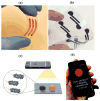
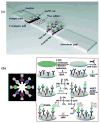
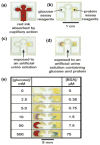



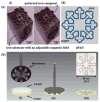

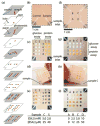
Similar articles
-
Low-cost bioanalysis on paper-based and its hybrid microfluidic platforms.Talanta. 2015 Dec 1;145:43-54. doi: 10.1016/j.talanta.2015.04.068. Epub 2015 May 6. Talanta. 2015. PMID: 26459442 Free PMC article. Review.
-
Lab-on-a-Disc for Point-of-Care Infection Diagnostics.Acc Chem Res. 2021 Oct 5;54(19):3643-3655. doi: 10.1021/acs.accounts.1c00367. Epub 2021 Sep 13. Acc Chem Res. 2021. PMID: 34516092
-
Advances in paper-based point-of-care diagnostics.Biosens Bioelectron. 2014 Apr 15;54:585-97. doi: 10.1016/j.bios.2013.10.075. Epub 2013 Nov 19. Biosens Bioelectron. 2014. PMID: 24333570 Review.
-
Paper and flexible substrates as materials for biosensing platforms to detect multiple biotargets.Sci Rep. 2015 Mar 6;5:8719. doi: 10.1038/srep08719. Sci Rep. 2015. PMID: 25743880 Free PMC article.
-
Enzyme embedded microfluidic paper-based analytic device (μPAD): a comprehensive review.Crit Rev Biotechnol. 2021 Nov;41(7):1046-1080. doi: 10.1080/07388551.2021.1898327. Epub 2021 Mar 17. Crit Rev Biotechnol. 2021. PMID: 33730940 Review.
Cited by
-
Simple and Sensitive Detection of Bacterial Hydrogen Sulfide Production Using a Paper-Based Colorimetric Assay.Sensors (Basel). 2022 Aug 8;22(15):5928. doi: 10.3390/s22155928. Sensors (Basel). 2022. PMID: 35957485 Free PMC article.
-
Desktop Fabrication of Lab-On-Chip Devices on Flexible Substrates: A Brief Review.Micromachines (Basel). 2020 Jan 23;11(2):126. doi: 10.3390/mi11020126. Micromachines (Basel). 2020. PMID: 31979275 Free PMC article. Review.
-
Innovative Quantification of Critical Quality Attributes.Adv Exp Med Biol. 2023;1420:97-115. doi: 10.1007/978-3-031-30040-0_7. Adv Exp Med Biol. 2023. PMID: 37258786
-
Endothelial Cell Mechanotransduction in the Dynamic Vascular Environment.Adv Biosyst. 2019 Feb;3(2):e1800252. doi: 10.1002/adbi.201800252. Epub 2018 Nov 25. Adv Biosyst. 2019. PMID: 31328152 Free PMC article.
-
Paper-Based Detection Device for Alzheimer's Disease-Detecting β-amyloid Peptides (1-42) in Human Plasma.Diagnostics (Basel). 2020 Apr 30;10(5):272. doi: 10.3390/diagnostics10050272. Diagnostics (Basel). 2020. PMID: 32365918 Free PMC article.
References
-
- World Bank. World development indicators database. Washington, DC: World Bank; 2014. Dec 16,
-
- Mabey D, Peeling RW, Ustianowski A, et al. Tropical infectious diseases: diagnostics for the developing world. Nat Rev Microbiol. 2004;2(3):231–240. Comprehensive review on infectious disease diagnostic assays in resource-constrained settings. - PubMed
Publication types
MeSH terms
Grants and funding
LinkOut - more resources
Full Text Sources
Other Literature Sources
